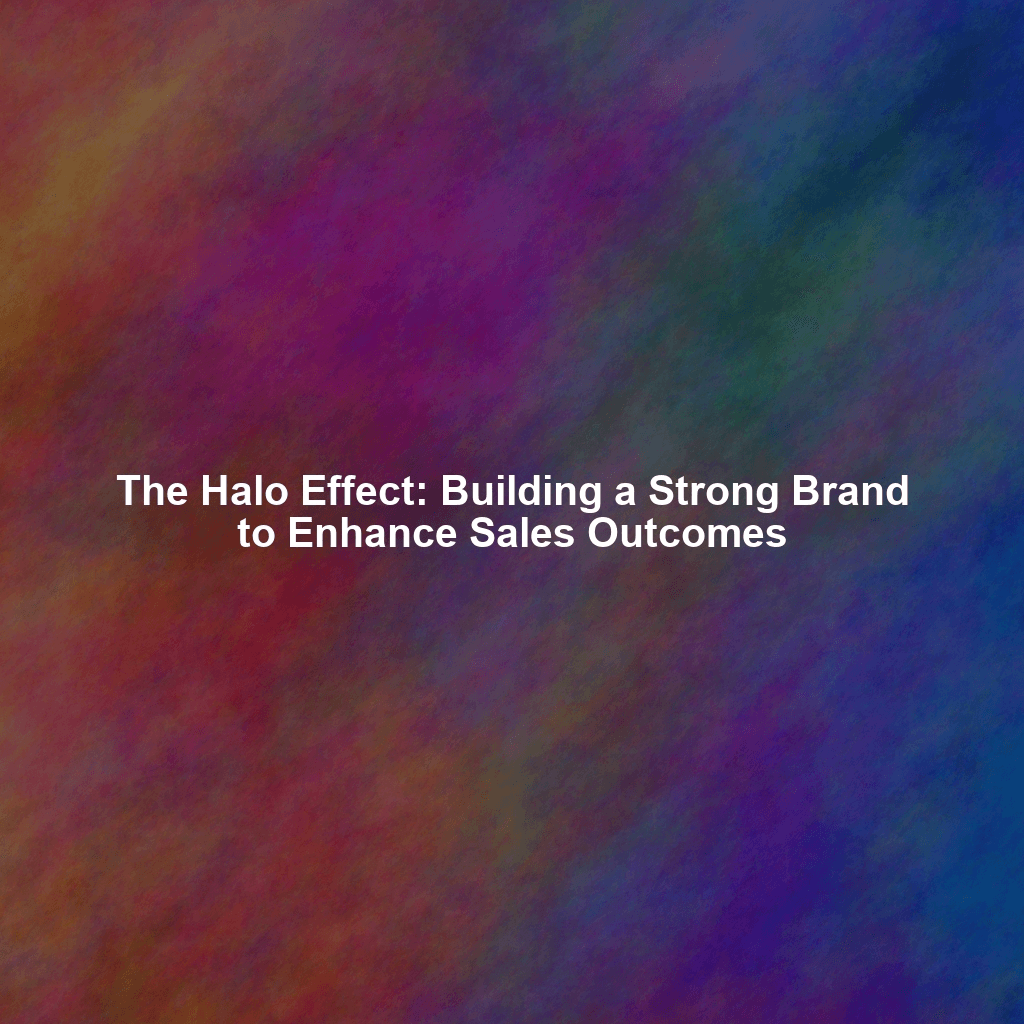In the world of sales and marketing, understanding how people think is just as important as understanding your product. Cognitive biases, those mental shortcuts our brains use to make decisions, can significantly influence customer behavior. One of the most powerful and often overlooked biases is the “halo effect.” This article will explore how the halo effect works, its impact on sales, and how you can leverage it to build a stronger brand and drive revenue.
Understanding the Halo Effect: A Cognitive Bias Unveiled
The halo effect, coined by psychologist Edward Thorndike in 1920, describes our tendency to allow one positive attribute of a person, product, or brand to positively influence our overall perception of it. Essentially, if we like one thing about something, we’re more likely to assume other things about it are also good, even without direct evidence. This bias is a cognitive shortcut that simplifies decision-making, but it can also lead to inaccurate judgments.
Think about it: if you meet someone who is incredibly friendly, you might automatically assume they are also intelligent, honest, and competent – even if you haven’t seen any evidence to support those claims. The same principle applies to brands and products.
The Halo Effect in Sales: A Powerful Driver of Success
In the context of sales, the halo effect can be a game-changer. A positive perception in one area, such as exceptional customer service, innovative product design, or a strong commitment to sustainability, can positively influence how customers perceive other aspects of your business. This positive overall perception can translate directly into increased sales, brand loyalty, and positive word-of-mouth referrals.
How the Halo Effect Impacts Purchase Decisions
Consider these scenarios:
- Exceptional Customer Service: A company known for its outstanding customer service might be perceived as having higher quality products, even if those products are comparable to competitors. Customers are willing to pay a premium because they trust the brand and believe they will be taken care of should any issues arise.
- Innovative Design: A company renowned for its cutting-edge product design might benefit from increased trust in its technological advancements and reliability. Consumers may overlook minor flaws because they perceive the overall product as superior due to its innovative design.
- Strong CSR (Corporate Social Responsibility): A brand committed to ethical sourcing and environmental sustainability may attract socially conscious consumers who are willing to support the company, even if its products are slightly more expensive than alternatives. They perceive the brand as trustworthy and aligned with their values.
Building a Strong Brand to Trigger the Halo Effect
The key to leveraging the halo effect is to consciously build a strong brand reputation in a specific area. Focus on excelling in a key attribute that resonates with your target audience. This could be anything from providing unparalleled customer support to developing groundbreaking technology.
Here’s how to build a strong “halo”:
- Identify Your Strengths: What does your company do exceptionally well? What are you known for? Conduct market research, gather customer feedback, and analyze your internal operations to pinpoint your key differentiators.
- Focus on Excellence: Invest in resources and training to ensure you consistently deliver outstanding results in your chosen area. Don’t spread yourself too thin; focus on becoming the best in a specific domain.
- Communicate Your Value: Make sure your target audience knows about your strengths. Highlight your achievements in your marketing materials, website, and social media channels. Share customer testimonials and case studies that showcase your expertise.
- Maintain Consistency: The halo effect is fragile. It can be easily tarnished by negative experiences. Ensure you consistently deliver on your promises and maintain a high standard of quality across all aspects of your business.
Examples of Companies Leveraging the Halo Effect
Several companies have successfully leveraged the halo effect to build strong brands and drive sales. Here are a few notable examples:
- Apple: Apple’s reputation for innovative design and user-friendly technology creates a strong halo effect. Consumers perceive Apple products as premium and desirable, even if competitor products offer similar features at a lower price. Their design-centric approach has created a positive association with quality and innovation across their entire product line.
- Amazon: Amazon’s unwavering commitment to customer satisfaction has built a powerful halo. Consumers trust Amazon to deliver on its promises and resolve any issues quickly and efficiently. This trust extends to Amazon’s various services, including Prime, AWS, and its marketplace, making customers more willing to try new offerings.
- Patagonia: Patagonia’s strong commitment to environmental sustainability has resonated deeply with socially conscious consumers. This positive association with environmental responsibility enhances the perception of their products as high-quality and durable, even though they often come at a premium price. Consumers trust that Patagonia is committed to ethical practices and are willing to pay more to support their mission.
Conclusion: Harnessing the Power of Perception
The halo effect is a powerful cognitive bias that can significantly impact sales and brand perception. By focusing on building a strong reputation in a key area, companies can create a positive halo that extends to other aspects of their business, ultimately driving revenue and fostering customer loyalty. Understanding and leveraging this bias is a critical component of any successful sales and marketing strategy. So, identify your strengths, focus on excellence, and communicate your value to unlock the potential of the halo effect and build a brand that resonates with your target audience.
 Skip to content
Skip to content

